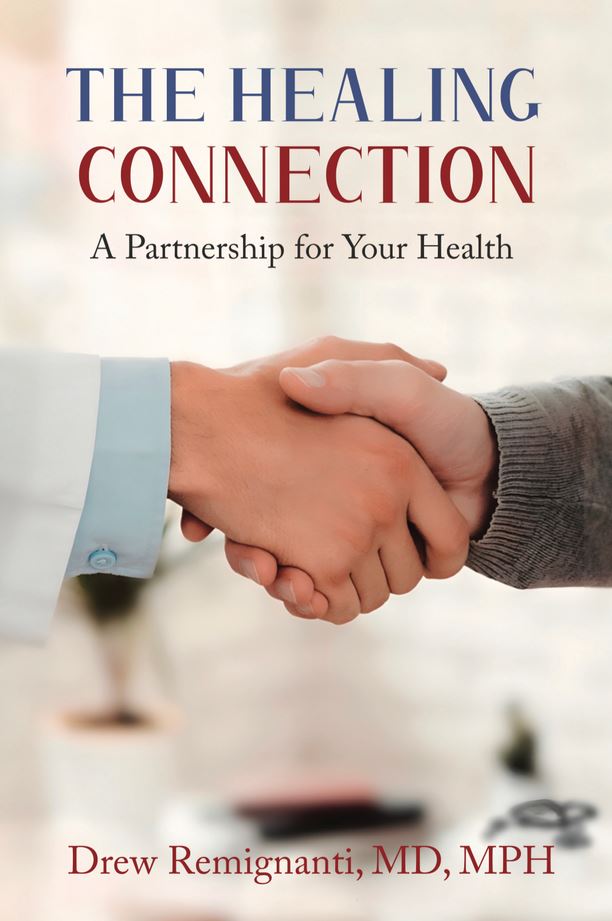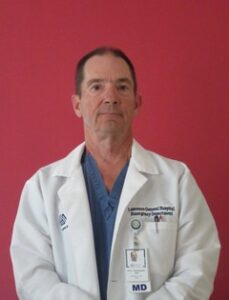Blog by Drew Remignanti, MD, MPH
“The boundaries between health and disease, between well and sick, are far from clear and never will be clear, for they are diffused by cultural, social, and psychological considerations.”
 So wrote Dr. George L. Engel in 1977, when he proposed his biopsychosocial model of illness. The bolding of never will be clear is my added emphasis. This statement jumped out at me while researching my book on the enduring importance of the patient-physician relationship; a relationship currently under threat of conversion to the more expensive and less effective consumer-provider model. Unfortunately, almost 50 years later, the healthcare enterprise, particularly here in the United States, and including both the patient and the physician side of our interactions, has been stubbornly reluctant to adjust to Engel’s observation.
So wrote Dr. George L. Engel in 1977, when he proposed his biopsychosocial model of illness. The bolding of never will be clear is my added emphasis. This statement jumped out at me while researching my book on the enduring importance of the patient-physician relationship; a relationship currently under threat of conversion to the more expensive and less effective consumer-provider model. Unfortunately, almost 50 years later, the healthcare enterprise, particularly here in the United States, and including both the patient and the physician side of our interactions, has been stubbornly reluctant to adjust to Engel’s observation.
“Health, as defined by the World Health Organization (WHO), is a state of complete physical, mental and social well-being and not merely the absence of disease or infirmity.”
That definition is both annoyingly idealistic, as well as wonderfully egalitarian. By this standard, none of us is completely healthy, or at least not for very long. It does however usefully encapsulate Engel’s model. His model was intended to stand in contrast with the existing purely physical biomedical model. Dr. Engel was uniquely trained in, and had University of Rochester medical school appointments in, both internal medicine and psychiatry. In this same passage he continues,
“The traditional biomedical view, that biological indices are the ultimate criteria defining disease, leads to the present paradox that some people with positive laboratory findings are told that they are in need of treatment when in fact they are feeling quite well, while the others feeling sick are assured that they are well, that is, they have no ‘disease.’ ”
I interpret Engel’s prescient remarks not as a sign of his pessimism, but more so as a forewarning of the inherent and enduring challenges in the medical interaction (beset as it is by much uncertainty).
As patients, we really don’t care whether we have an illness or a disease; we simply know that we don’t feel well and want to feel better. As physicians, that is predominantly what we want for our patients as well, but making the distinction is critical when deciding how to proceed. The challenge of arriving at accurate diagnostic conclusions and effective treatment plans can be daunting.
Dr. Eric J. Cassell has more colorfully described this distinction as, “The word ‘illness’ to stand for what the patient feels when he goes to the doctor, and ‘disease’ for what he has on the way home from the doctor’s office. Disease, then, is something an organ has; illness is something a man has.”
So, that begs the question, what do we do when faced with medical uncertainty? That is a question that I have personally faced for 50+ years now as a chronic autoimmune disease patient, while simultaneously asking myself that same question from the physician point of view during my 40-year career as a board-certified emergency physician. The uncertainties inherent in my patient experiences definitely contributed to my choice of emergency medicine (EM) as a specialty; believing, with some justification, that there would be less uncertainty and more rapid definitive resolutions there. What I didn’t realize in advance is that in the emergency department (ED) we are often doing uncertainty at 100 MPH and with complete strangers. Don’t get me wrong, we do a bang-up job of it, and quite often enjoy the challenge.
But many illnesses and diseases don’t benefit from the 100 MPH with strangers model, and are more effectively addressed with continuity of care in a sustained patient-physician relationship (one modeled on a mutually involved and trusting “partnership,” I would argue), and one with statistically proven reductions in mortality!
Many hospital administrators couldn’t care less though. In support of that contention, consider the billboards encouraging ED visits and advertising ED wait times, thus leading to our current nationwide problem with ED overcrowding, and the surveys that you get asking if you were “satisfied,” with your hospital visit.
If you think I’m being overly harsh in my judgement, then please consider one hospital administrator’s declaration that, “People need primary care but not necessarily a physician relationship.” Additionally, regarding the over-emphasis on patient satisfaction, a study from UC Davis in 2012 showed that patients who reported being most satisfied with their care had greater chances of being admitted to the hospital, had higher total healthcare costs, higher prescription drug expenditures, and…wait for it…higher death rates than patients who were less satisfied with their care.
In our struggle to resolve uncertainty as patients, we are susceptible to being ensnared by the current in-vogue, deceptively appealing, but more expensive and less effective consumer-provider model. A model which is being aggressively promulgated as equivalent to a sustained patient-physician relationship. A model which draws a false equivalence between a physician’s lengthier and more demanding period of training and acquisition of expertise, compared with that received by non-physician “providers.” One that claims that any warm body will do in terms of who we willingly reveal our suffering to, place our trust in, and stake our welfare and very lives upon. A model which is on the verge of pivoting to try to convince us that, actually a warm body with a caring heart and soul turns out to not even be necessary, and that a soulless artificial intelligence (AI) will suffice (it being a mere coincidence that AI does not require a sustained salary or benefits package!).
In our struggle to resolve uncertainty as physicians we are susceptible to similar market forces which demand that we be “productive” or lose our jobs. This is despite the fact that there are no “products” in the patient-physician interaction, since we are in the righteous business of assisting suffering individual humans to reduce their suffering and feel more “whole.”
But perish the thought that here we are introducing even more medical uncertainty by getting lost in mere “feelings,” and let us return to some hard science results, which definitively reinforce Engel’s biopsychosocial formulation. First, patients who become more knowledgeable about their conditions and more engaged in the development of their treatment plans are subsequently more committed to and adherent with those plans. Multiple studies show that adhering to a treatment plan then reduces mortality, as in this study which concluded that, “Overall, patients who did not adhere well to treatment regimen (i.e., who took less than or equal to 75% of prescribed medication) were 2.6 times more likely than good adherers to die within a year of follow-up” Similar findings were present here, here, and here.
At first glance, this just seems to be the truism that taking effective medicines works. But when you look closer, study participants in the placebo arm who were more adherent also experienced a halving of mortality rates! An unclear mechanism is at play here, likely some admixture of placebo effect and healthy adherer effect (the notion that people who adhere to treatment plans are logically more likely to follow other good health advice). Nevertheless, we see a scientifically confirmed major reduction in mortality rate with greater adherence, regardless of mechanism.
Second, hard evidence shows that individuals with adequate social relationships have a 50% greater likelihood of survival compared to those with poor or insufficient social relationships. Another study revealed that the most isolated group of men had a mortality rate 2.3 times higher than the men with the most social connections, while for women the mortality rate was 2.8 times higher.
But, that just has to be friends checking in on you and assuring that you are cared for when ill or injured, right? Turns out that there is essentially no difference between objective and subjective measures of social isolation when predicting mortality. Apparently, it doesn’t matter if you live alone or not, just feeling less lonely and less isolated reduces mortality!
Third, there are the impressive mortality reductions associated with the act of helping our fellow humans as reflected in several volunteering studies. One study concluded, “The 44 percent reduction in mortality associated with high volunteerism in this study… was only slightly smaller than the 49 percent reduction associated with not smoking.” Then, a second stated, “Taken together, these findings strongly suggest that giving support, rather than receiving support, accounts for the benefits of social contact.”
But that’s just people in good health more likely to volunteer, isn’t it? Actually, not so fast, because then there is this: “The health advantage of volunteering among those in worse health is twice as large as the health advantage among the healthiest Europeans.”
In one of life’s perfect little ironies, there appears to be substantial evidence to suggest that, health-wise, it is in our own self-interest to strive daily to be less self-interested.
Sounds like it’s well past time to give Engel’s model a closer listen. And high time to resuscitate the patient-physician relationship before business interests succeed in declaring it dead and buried! The science says that if you want to live a longer and healthier life, you need to develop a reliable patient-physician relationship, and also care for those around you.
 Drew Remignanti, MD, MPH, is the author The Healing Connection: A Partnership for Your Health and writes from the dual perspective of a 40 year career emergency physician and of a 50 year career chronic autoimmune disease patient.
Drew Remignanti, MD, MPH, is the author The Healing Connection: A Partnership for Your Health and writes from the dual perspective of a 40 year career emergency physician and of a 50 year career chronic autoimmune disease patient.